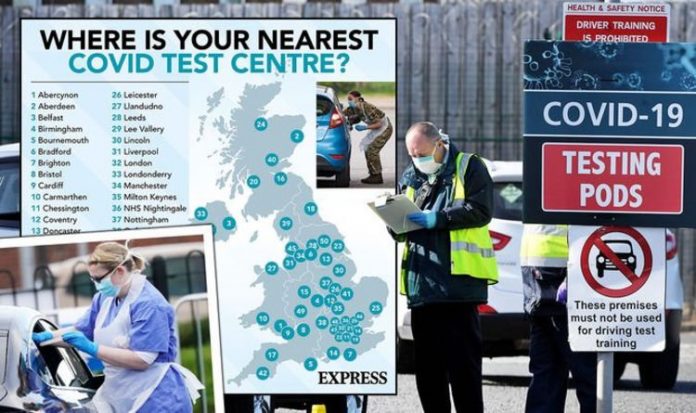A record one-day rise in the number of new coronavirus cases around the world has been recorded by the World Health Organisation. Some 307,930 confirmed infections were reported over 24 hours, the highest yet seen during this pandemic. More tham 29 million cases have been reported since the beginning of the outbreak with 924,831 deaths. And of these figures the UK has the 14th highest number of cases, the third highest in Europe behind only Spain and France. And medical health experts warn further lockdown measures could be enforced if these rising numbers are not kept in check.
WHO director-general Tedros Adhanom Ghebreyesus said the average number of daily cases in Europe is now higher than during the first peak of the pandemic, adding Europe is not “out of the woods” yet.
He said: “Lives and livelihoods have been lost, the global economy is in recession and social and political fault lines have been exposed.
“The European region is no exception. “Many of your countries have been the among hardest hit. We are by no means out of the woods.
“Fortunately, the number of deaths appears to be remaining at a relatively low level – for now. But every death is a tragedy, and there can be no room for complacency.
“If we do not keep transmission in check, more people will lose their lives, and there is the real risk of reintroducing so-called lockdown measures that have been so costly.”
READ MORE: New UK restrictions TODAY – Israel gives dire warning of what’s next
In the UK, new rules have come into force today allowing no more than six people to meet – ether inside or outside – at one time.
Those who gather in groups of more than six people could face fines from £100 for a first offence, doubling on each further offence up to £3,200.
The change to the rules comes after the R-rate rose to between 1 and 1.2 for the first time since March as cases began to double every seven to eight days.
Wales’ health minister Vaughan Gething today warned the pattern of increasing COVID-19 cases is “similar to the situation we faced in early February”.
He said “action should be taken now to prevent significant harm or another full lockdown”.
These regional sites have been set up by the Department for Health and Social Care (DHSC), who has also established an additional 25 test sites for NHS staff.
And if you can’t make it to a test centre, you can order a free home test kit from the NHS website.
The NHS says: “Book a visit to a test site to have the test today. Or order a home test kit if you cannot get to a test site.
“On days 1 to 4 of your symptoms, you can get tested at a site or at home. If you’re ordering a home test kit on day 4, do it by 3pm.
“On day 5, you need to go to a test site. It’s too late to order a home test kit.”
But in recent weeks, testing has reached peak capacity with labs struggling to deal with the rising numbers.
Mr Gething said these issues with the UK Government’s Lighthouse Labs were “plainly not acceptable”.
He said: “I know there are a number of cases where people are trying to book a test at drive-in centres and finding them either fully booked or being told to go to a centre many hundreds of miles away,” he said.
“I’ve spoken with the UK Secretary of State about this, including on Saturday, when we agreed to immediate action to protect capacity in areas experiencing higher incidence and spikes and to make sure that unilateral restrictions are not placed on Wales again.
“But we have to see an urgent and sustainable solution to these ongoing issues affecting the Lighthouse Lab system.”
Scottish First Minister Nicola Sturgeon, too, said she has “serious concern” with the “backlog of test results”.
Speaking this afternoon, the SNP leader urged Health Secretary Matt Hancock to share the “full scale and nature of issues they are facing” as testing laboratories.
Her statement comes as a WHO spokeswoman warned an increase in cases can be followed several weeks later by an increase in deaths.
She added: “At the moment, despite the case resurgence in Europe, we have not seen death rates as high as it was in the spring.
“This can be linked to a variety of reasons including larger proportion of cases among young people who tend to be less severely impacted; protections in place for the most vulnerable; increased testing; better care for severe patients
“As winter approaches, and other respiratory pathogens start to circulate including seasonal influenza, we can expect increased risks to older people at this time of year.”







